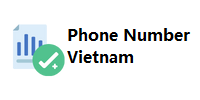According to information by Google SearchLiaison, the Useful Content system evaluates the quality of websites, although no specific details are on how to understand Google’s Useful Content system or how such an evaluation is , it is understood that Google uses a variety of signals and algorithms to determine the relevance and quality of a website.
Google makes regular updates to its useful content system to improve how content is in search results.
These updates may include changes to algorithms and link best practices, but no specific details are about these updates.
While not all the internal details of Google’s useful content system are known, it can be that the evaluation is on factors such as content relevance, user experience, and website authority.
What is Google’s useful content system?
Google’s Useful Content System refers to the algorithms and systems Google uses to evaluate and rank content in search results . Its goal is to provide users with relevant, high-quality information in response to their search queries.
In this way, Google’s useful content system is crucial for its ability to show users the most relevant and useful results. When a user performs a search, Google’s algorithms analyze billions of web pages in its search index to determine what information is most relevant to that specific query.
The above is done taking into account a variety of factors, such as originality, authority and relevance of the content.
Likewise, Google’s useful content system is essential to ensuring that users find the information they are looking for quickly and efficiently.
By displaying relevant, high-quality search results, Google helps users get answers to their questions, find products and services, and access useful online content.
For content creators, understanding how Google’s useful content system works is crucial to optimizing their content and improving its visibility in search results.
That said, by following Google’s guidelines and creating original, relevant, and high-quality content, creators have a better chance of appearing at the top of search results and reaching a wider audience.
A rather confusing Google Guide
Google recently its Helpful Content System guidelines to clarify a particular signal that affects website rankings. However, there was one part of that guide that unintentionally confusing.
With the new update, some users have made certain changes that Google has as attempts to trick Google’s algorithm by making minor changes to content and updating the publication date to make it appear recent.
This practice is to increase chinese overseas america database the visibility of your content in search results . However, it’s important to note that this strategy is not , as Google can detect these tactics and penalize the website.
The main problem is that many people return to a web page and make minor changes to the content, such as correcting typos, replacing or adding words to improve grammar or clarity, or changing words to clarify the content. These are legitimate, but small changes that many people make to their content.
Thus, the guidance that seemingly making these small changes, which in date changes, a situation where a minimal improvement could contribute to a negative evaluation by the Useful Content System.
As we know, this guidance has confusion among and SEOs , as it is unclear what the exact limits are regarding changes that can be made without negatively impacting the content’s evaluation by Google’s algorithm.
The alignment of behaviors and signals in identifying useful content
The date-shifting tactic is just one of many tactics the machine learning model uses to calculate the statistical probability that a website is employing SEO tactics for Google instead of creating useful content.
That said, it’s important to note that using a single metric in isolation can lead to poor decisions by the statistical model . Therefore, in best practices to ensure security search-statistical models, using multiple signals together to calculate statistical probability has been to be more accurate than using a single signal.
Because of this, SearchLiaison notes that simply changing the date of a web page in an attempt to trick Google into thinking the content is new may be aligning with other behaviors generally with signals to identify content usefulness.
This means that doing just one thing that might be an indicator of uselessness is not enough to rate a web page as useless when there are no other negative signals.
Basic Google Search Guidelines
Following basic Google search guidelines is crucial to ensure your content meets the requirements and has a better azerbaijan business directory chance of appearing in search results. By following these guidelines, you can optimize your content to make it more visible and relevant to users.
Optimize visibility in search results
By following Google’s guidelines, you can optimize your content to make it more visible in search results. This increases the chances that users will find your content when they search for something to your topic.
Increase content relevance
Google’s search guidelines are to ensure that the content in search results is relevant and useful to users. By following these guidelines, you can ensure that your content meets the quality and relevance standards set by Google.
Improve user experience
Google’s search guidelines focus on providing a positive user experience by displaying useful and relevant content. By following these guidelines, you can create content that meets users’ and provides them with valuable information.
